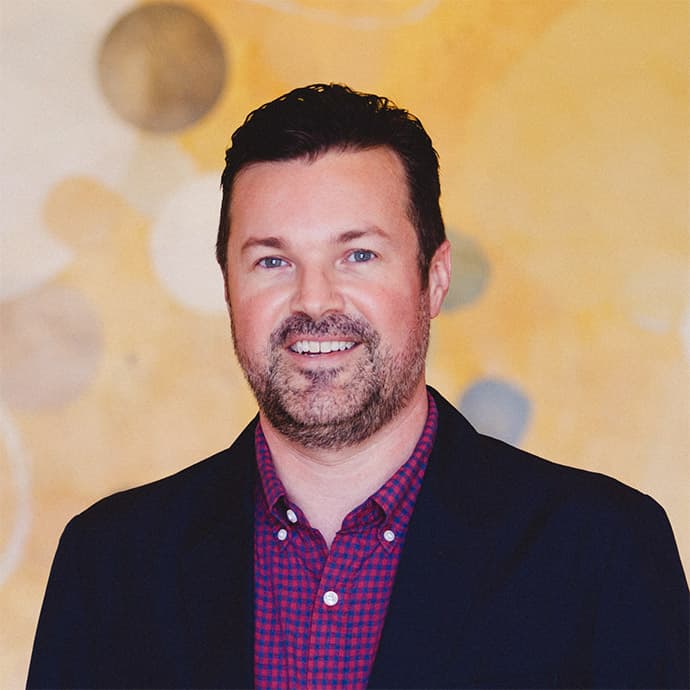How to Quit Using Cocaine



Dr. Bapat is a licensed psychologist. Her clinical work has included treatment in outpatient and residential rehab settings for varied mental health conditions such as mood disorders, generalized anxiety, PTSD, and substance use disorders.

Dr. Scot Thomas received his medical degree from the University of California, San Diego School of Medicine. During his medical studies, Dr. Thomas saw firsthand the multitude of lives impacted by struggles with substance abuse and addiction, motivating him to seek a clinical psychiatry preceptorship at the San Diego VA Hospital’s Inpatient Alcohol and Drug Treatment Program.




Dr. Bapat is a licensed psychologist. Her clinical work has included treatment in outpatient and residential rehab settings for varied mental health conditions such as mood disorders, generalized anxiety, PTSD, and substance use disorders.

Dr. Scot Thomas received his medical degree from the University of California, San Diego School of Medicine. During his medical studies, Dr. Thomas saw firsthand the multitude of lives impacted by struggles with substance abuse and addiction, motivating him to seek a clinical psychiatry preceptorship at the San Diego VA Hospital’s Inpatient Alcohol and Drug Treatment Program.
Cocaine is an addictive stimulant drug. Its effects can make a person feel more alert, energetic, and talkative.1 People may feel less hungry and need less sleep due to cocaine use.1Cocaine increases the actions of dopamine—a brain signaling molecule involved in pleasure and reward. Heightened dopamine activity reinforces continued use of the substance, which can contribute to addiction development.1
Cocaine addiction is a chronic medical issue associated with serious health risks, but quitting cocaine can be hard to do alone. The good news is that it can be treated, and recovery is possible.
This page will cover signs of cocaine addiction, how to help someone with cocaine addiction, how to stop using cocaine, and how to pursue the path to recovery.
How to Help Someone With a Cocaine Addiction
It is important to keep in mind that for someone with any sort of substance use disorder (SUD), the answer is not as simple as “just quitting”—loss of control over their drug or alcohol use is part of the disease of addiction.2 However, they have the ability to seek help; assisting them in locating resources can help them feel less alone and overwhelmed.3
The idea of speaking with a mental health professional or entering treatment can be scary, especially if the person has not had any kind of counseling before. There are different ways in which someone can pursue treatment, and they can begin with the one that makes them most comfortable.
Signs Someone May Be Addicted to Cocaine
A loved one cannot diagnose addiction like a medical provider can, but there are certain signs that may indicate problematic cocaine use by a friend or family member and that they could benefit from help.
Addictions are diagnosed as SUDs, and cocaine addiction, in particular, is diagnosed as stimulant use disorder—the continual use of cocaine despite it causing problems in a person’s life.2
Signs and symptoms of cocaine addiction can differ from person to person. According to the Diagnostic and Statistical Manual of Mental Disorders, Fifth Edition, Text Revision (DSM-5-TR), there are 11 signs and symptoms that, should they be present, clinicians assess for when making a diagnosis. A few examples include:2
- Using more cocaine or over a longer period of time than the person intended.
- Making repetitive unsuccessful attempts to stop or reduce use.
- Spending a significant amount of time acquiring, using, or recovering from the effects of cocaine.
- Repeatedly using cocaine in hazardous situations, such as while driving.
- Continual use despite it causing or worsening a physical or psychological condition.
- Experiencing withdrawal if they suddenly stop taking cocaine.
If you are concerned that a friend or loved one may be struggling with compulsive use and/or the consequences of such use, it may be time to speak with them about getting help.
How to Talk to Someone About Their Cocaine Use
A person struggling with addiction is more likely to engage in a conversation if they feel support and empathy from a loved one.3 Here are some things to do and not do:3
DO
- Approach the person while they are sober.
- Be direct and fact-based.
- Stay calm.
- Express concern sincerely and compassionately, like “I’m really worried about you because you’ve missed so many work days” or “I was really scared when you overdosed. I’d really like to help you.”
- Listen to the person openly and without judgment.
- Provide help, such as sharing resources or offering to accompany them to appointments for moral support.
DON’T
- Be confrontational.
- Lecture.
- Criticize or blame.
- Enable the person.
If someone is resistant to help, Community Reinforcement and Family Training (CRAFT) is a program that teaches people how to discourage use and reinforce sobriety with a loved one. It has been found that family members trained in CRAFT consistently are able to engage their substance-misusing loved one into addiction treatment in nearly 7 out of 10 cases.4
How to Quit Using Cocaine
Quitting cocaine can be scary because it is a major change from what the person has become accustomed to. Therefore, it can be helpful to know what to expect as they start their recovery journey.
First, withdrawal can occur if cocaine use is stopped abruptly, including symptoms of depressed mood, fatigue, vivid and unpleasant dreams, sleep problems, agitation, or slowed motor movement.2Detox may be an option in certain circumstances. While there are no FDA-approved medications for treating stimulant use disorder, certain medications may be used to ease withdrawal symptoms and increase comfort. If other substances are being used along with cocaine, also known as polysubstance use, medical detoxification may be more likely, as substances such as opioids and alcohol can cause extremely unpleasant, and even life-threatening, withdrawal symptoms.5
Second, establishing a plan for locating treatment can make the process feel less overwhelming. Some people with cocaine addiction may be ready to pursue treatment, while others may be more ambivalent. No matter the person’s readiness level:
- They can speak about their thoughts and feelings with someone they trust, like a loved one or a counselor.
- When the individual is ready to locate a specific treatment program, they can speak with their primary care physician (PCP) or addiction counselor for an initial assessment and treatment recommendations.
- The individual can contact their health insurance company to see what is covered regarding addiction treatment.
- They can begin to search for a program near their area based on provider recommendations.
While speaking with potential programs, it can be important to ask:
- Is your program accredited?
- Are your providers licensed in addiction treatment?
- What health insurance coverage for addiction treatment do you accept?
- How much does the program cost?
- Do you provide evidence-based behavioral therapies?
- Do you provide case management and linkage to aftercare?
Effective treatment is individualized, addresses multiple needs (not drug use alone), includes behavioral therapies (and medication if appropriate), simultaneously treats co-occurring mental disorders (when applicable), and can be adjusted at any point during recovery to reflect changing needs.6
Support While Quitting Cocaine
Cocaine addiction is treated as a chronic medical condition (and it is treated alongside any physical health needs the person has). As stated above, there are currently no FDA-approved medications for the treatment of cocaine addiction.7 Your healthcare provider may prescribe certain short- or long-term medications to reduce cocaine cravings.8
A peer support group like Cocaine Anonymous is one place to start where people can open up to others who are also dealing with the illness. Talking with one’s PCP is another option as the PCP can assess and provide initial recommendations.9 Another option is talking to a therapist or addiction counselor.9
Behavioral therapies are a crucial component of stimulant use disorder treatment. Behavioral therapies may be utilized across all levels of care and applied in various therapeutic settings, such as individual, group, and family therapy.6
Behavioral therapeutic modalities such as contingency management (CM) and cognitive behavioral therapy (CBT)/relapse prevention (RP) have been found to be effective techniques specifically for cocaine use disorder treatment.7
CM helps increase desired behaviors by rewarding individuals with incentives, and withholding the incentives when the desired behavior is not achieved.7
CBT/RP is a type of cognitive behavioral therapy that teaches patients strategies and skills that help them change thoughts and behaviors regarding substance use.7 It has been found that a combination of CBT/RP and CM can be highly effective.7
Levels of Addiction Treatment
Various levels of addiction treatment exist. The level that an individual begins depends on a number of factors, such as severity of the addiction, whether co-occurring disorders are present, and the resources that the person needs. Various treatment types may include:
- Inpatient treatment: This level involves living at the facility and receiving around-the-clock care.6 This may be a good fit for someone with a relatively severe SUD or who has co-occurring mental health conditions.6
- Intensive outpatient:Intensive outpatient programs for drug and alcohol addiction involve receiving services for a few hours each day a few times per week while living at home.6 This level of treatment is a fit for someone who has a drug-free and supportive home environment, has need for intensive care but does not need around-the-clock care, or needs to work or attend school while in treatment.6
- Outpatient counseling: Outpatient therapy involves meeting with a therapist once or twice per week at their office. In some cases, this type of treatment may be an important component of rehab aftercare for a person who has completed more intensive treatment. Outpatient counseling in conjunction with a 12-Step program helps to maintain progress made in rehab, maintain sobriety, and continue developing coping skills.6
Start Your Recovery
Treatment is available, and recovery is possible for you or your loved one. You can locate addiction treatment programs near you using our treatment directory. It is never too late to seek help for cocaine addiction.
-
National Institute on Drug Abuse. (2024). Cocaine. https://nida.nih.gov/research-topics/cocaine
-
Meyers, R.J., Smith, J.E. & Lash, D.N. (2005). A program for engaging treatment-refusing substance abusers into treatment: CRAFT. International Journal of Behavioral and Consultation Therapy, 1(2), 90-100. https://psycnet.apa.org/fulltext/2014-45639-002.pdf
-
Substance Abuse and Mental Health Services Administration. (n.d.). TIP 45: Detoxification and substance abuse treatment. https://store.samhsa.gov/sites/default/files/d7/priv/sma15-4131.pdf
-
National Institutes of Health. (2018). Principles of drug addiction treatment: A research-based guide (third edition). https://nida.nih.gov/sites/default/files/podat-3rdEd-508.pdf
-
Substance Abuse and Mental Health Services Administration. (2021). TIP 33: Treatment for stimulant use disorders. https://store.samhsa.gov/sites/default/files/pep21-02-01-004.pdf
-
Lassi, D.L.S., Malbergier, A., Negrao, A.B., Florio, L., De Aquino, J.P. & Castaldelli-Maia, J.M. (2022, November 14). Pharmacological treatments for cocaine craving: What is the way forward? Brain Sciences, 12(11). https://pmc.ncbi.nlm.nih.gov/articles/PMC9688748/
-
National Institute on Alcohol Abuse and Alcoholism. (2024). Treatment for alcohol problems: Finding and getting help. https://www.niaaa.nih.gov/publications/brochures-and-fact-sheets/treatment-alcohol-problems-finding-and-getting-help
Our Promise
How Is Recovery.com Different?
We believe everyone deserves access to accurate, unbiased information about mental health and recovery. That’s why we have a comprehensive set of treatment providers and don't charge for inclusion. Any center that meets our criteria can list for free. We do not and have never accepted fees for referring someone to a particular center. Providers who advertise with us must be verified by our Research Team and we clearly mark their status as advertisers.
Our goal is to help you choose the best path for your recovery. That begins with information you can trust.









